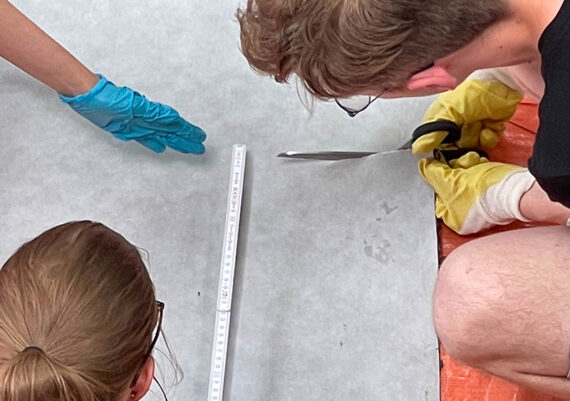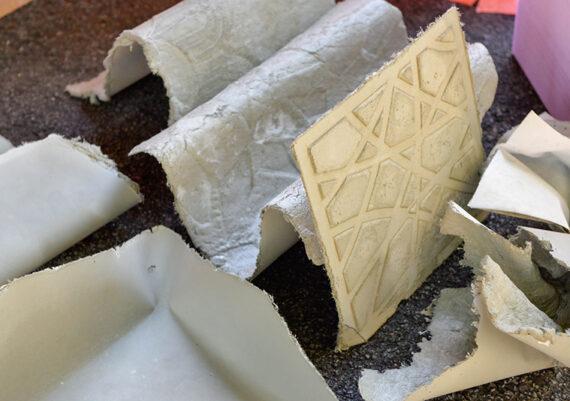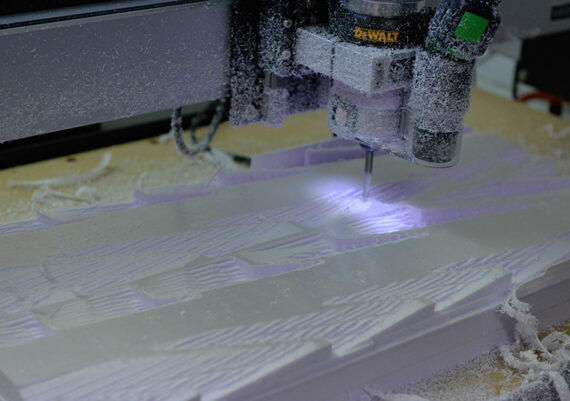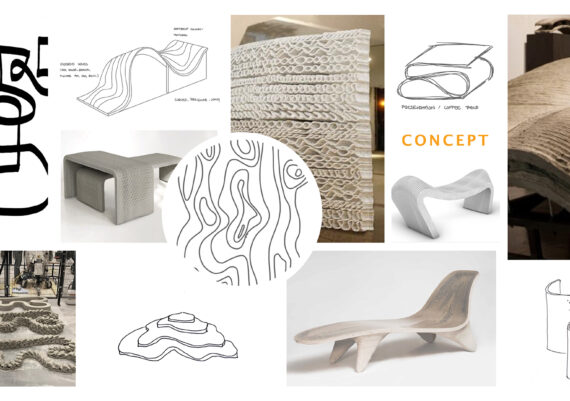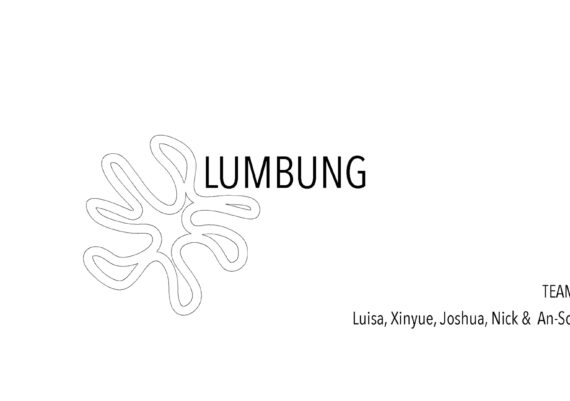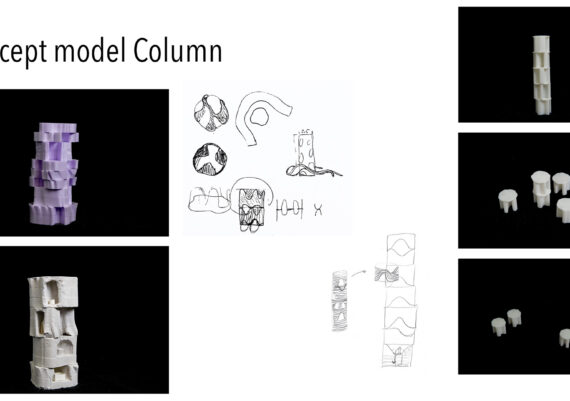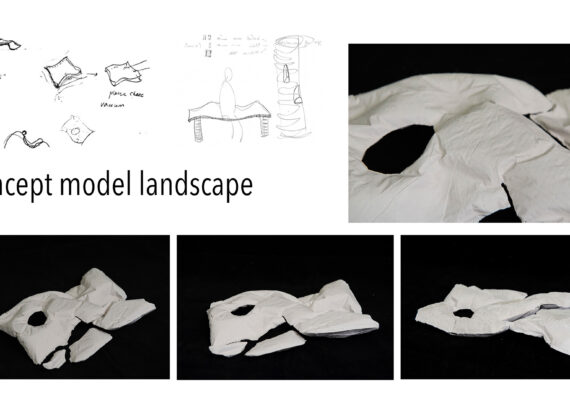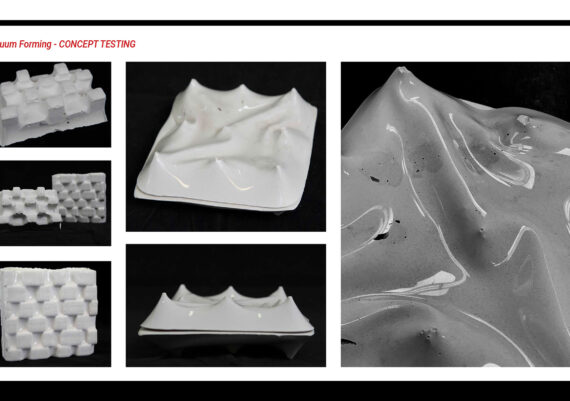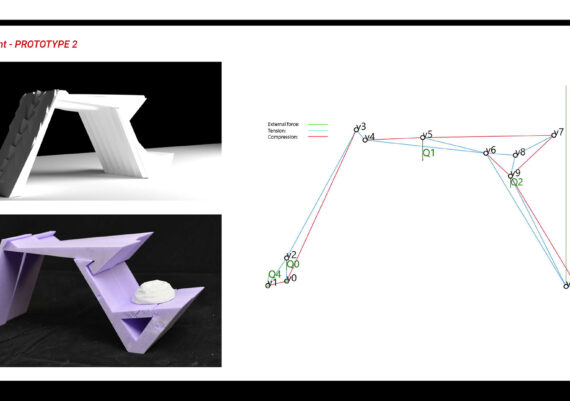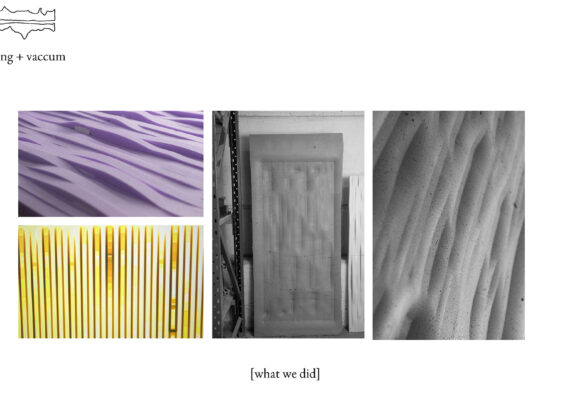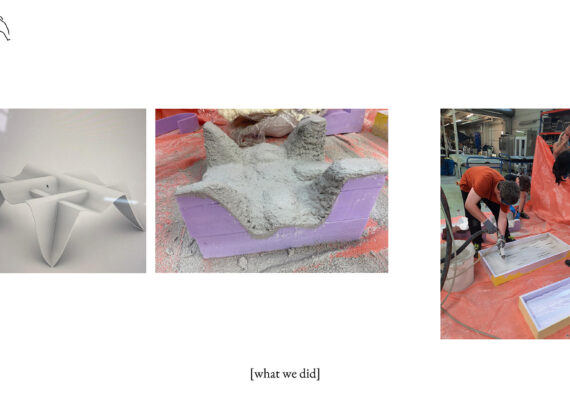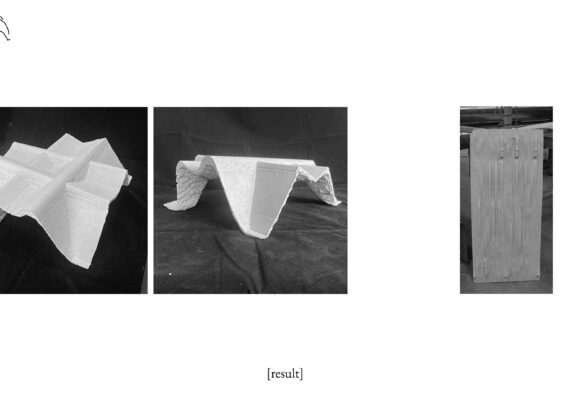Concrete is the world’s most used construction material. Due to its relatively easy handling, its ability to be shaped in almost any form, its forgivingness in terms of material inconsistencies, its excellent strength and durability; concrete is used everywhere and for a vast array of different purposes. These benefits, combined with the availability and affordability of its raw materials, have led to perceptions and practices that focus on the volume rather than the value of concrete. To engineer and develop optimal long-lasting concrete structures, with as few resources as possible, seems to be far more challenging than just relying on traditional approaches.
Current global challenges force all of us to rethink the ways we use and use up our surroundings. Preserving raw materials, saving energy, pressures on economical viable space, lead us to rethink our habits. We must challenge the traditional in order to built smarter. We must deploy the properties of concrete differently to meet our needs and challenges.
In other words, we should imaginatively reinterpret concrete as a material for constructing elements, buildings, and structures by tapping into its existing benefits from a different perspective. Our ambition must be to push beyond the easy abundance of concrete and give the world durable structures, that are more inspiring, more considered, with less raw materials, more reusable elements, clever methods for using/re-using/not using formwork; while delivering extended energy efficiency, comfort and performance. We need to focus on the value rather than the volume of concrete.
The circularity of concrete can deliver significant ‘value’. The most effective circular strategy in the built environment is to keep reusing the structure. Ownership and occupation may change many times over without demolishing the built structure, thanks to the unsurpassed durability of concrete. And when a structure is demolished, it can provide secondary raw materials to produce new concrete. How we assemble our structures also needs to be rethought; durable concrete elements should find a new life in the next structure. Obviously for this to happen clever design is essential, looking beyond the current assignment at hand. A vision is needed that sees across generations to make design compatible with our changing needs.
The 10th Concrete Design Competition on REIMAGINE asks students of architecture, design and engineering to explore and exploit the potential of concrete’s properties with respect to any notion of REIMAGINE. These can be related to inherent material properties, it’s production process, and to concrete’s application in new or existing structures. They may address aesthetic desires, structural systems or fabrication methods and comment on economic realities, sustainability demands or social issues.
This competition does not prescribe a specific location or program; participants can choose a context of their own that supports their fascinations and ambitions and that fits an acute presentation of their ideas. Proposals may range from objects, furniture and architectural details to housing, landscape interventions, complex buildings, infrastructure and structural systems. Competition entries need to address technical and functional aspects as well as formal and programmatic ones – ideas need to be tested through design proposals to convincingly demonstrate their potential. They will be reviewed on the combination of inventiveness in addressing the competition’s theme and architectural implications.
The 10th Concrete Design Competition – REIMAGINE runs in five European countries during the academic year 2021 - 2022. National laureates will be invited to participate in a weeklong international workshop facilitated by the industry’s expertise featuring renowned lecturers and critics, further exploring reimagining concrete.
10TH CONCRETE DESIGN COMPETITION ON REIMAGINE
COMPETITION RESULTS
AC333 - Circular Concrete - A Sustainable Tool
Ireland (Joint Winner)
Louise Weston - Queens University
AC724 - Design for Disassembly / Reuse
Ireland (Honourable Mention)
Anne Cook - University College Dublin
BK237 - Abstract Concrete
Belgium (Honourable Mention)
Bogdan Stoicescu - Université catholique de Louvain
CM111 - (dis)connection
Netherlands (Joint First Prize)
Vlad-Gabriel Dobran, Kristīne Mogiļevceva & Ksenija Onufrijeva - Delft University of Technology
DV110 - Schwimmender Beton
Austria (Master Class Participation)
Lukas Auer, Luca Chiara Brändle, Klara Burgstaller, Osman Esebali, Anna Lotta Fraunberger, Martin Guffer, Lara Hirnsperger, Philipp Hofbauer, Maximillian Höfner, Julian Karoly, Thea Metzler,, Linda Rainer, Yahya Tok & Tom-Luca Willlenbacher - FH Campus Wien
JM212 - Kickstand - Fahrradständer
Germany (First Prize)
Marisa Gaab & Joshua Weber - Staatliche Hochschule für Gestaltung Karlsruhe
JT007 - New UHPRC Wave
Belgium (Second Prize)
Isabelle Borgers, Caro Geerts & An-Sofie Suffeleers - UHasselt
LT082 - Betonreserve als Kulturzentrum
Germany (Honourable Mention)
Christine Maria Feistl & Lisa Rebecca Schmidt - TU Berlin
MS778 - The Arch
Netherlands (Third Prize)
Matteo Armenante, Jelmer Eising & Kathryn Larsen - Delft University of Technology
RE123 - Trombe Wall
Netherlands (Honourable Mention)
Fatih Cebeci, Midas Hoezen, Ruben Koppes, Lilli Kroher & Rui Wei - Delft University of Technology
UT017 - Designing Concrete for Disassembly
Ireland (Runner Up)
John Schumacher - University College Dublin
VC069 - Virgin Connections
Netherlands (Honourable Mention)
Joren Jans, Djamo Mastenbroek - Delft University of Technology
VT333 - VersaTile
Netherlands (Honourable Mention)
Christodoulakos Miltiadis Filippos, Lohe Elin, Lieser Maximilian Wilhelm - Delft University of Technology
WX303 - Insulation Block with Injection 3D printing
Germany (Honourable Mention)
Bo Wang & Yinan Xiao - TU Braunschweig
XG068 - MODUMN
Netherlands (Joint First Prize)
Gina Goedert & Xinyue Wu - Delft University of Technology
JURY REPORTS
NATIONAL JURIES
Austria
Marta SChreieck (Jury Chair), Wojciech Czaja, Renate Hammer, Katharina Kindelmann, Simone Oberndorfer, Markus Querner, Stefan P. Schleicher & Gernot Tritthart
Belgium
Adrien Verschuere (Jury Chair), Klaas De Rycke, Stefanie Everaert, Aurélie Hachez & Philippe Vander Maren
Germany
Sandra Hofmeister, Markus Holzbach, Jan Kampshoff, Ulrich Nolting, Holger Techen & Anca Timofticiuc
Ireland
Shane Birney, John Dobbin, David O'Mahony & Tania Miller
Netherlands
Marieke Kums (Jury Chair), Ellen van Genechten, Albert Herder, Pim Peters & Serge Schoemaker
Our Concrete Design Master Class for laureates of the competition took place in Kassel, Germany from August 20 - 27. We were hosted by G.tecz Engineerg, a company specialized in developing concrete materials and technologies. They offered their facilities, equipment and expert staff to support the participants. We had the opportunity to work with high end concretes and production methods like, 3D concrete printing, spraying concrete, folding 3mm thick concrete sheets and vacuumforming concrete. A true setting to REIMAGINE!
CONCRETE DESIGN MASTER CLASS ON REIMAGINE
2022 / English
Documenting the Concrete Design Master Class on REIMAGINE. Kassel, August 2022.
film:
Johannes Kastner, Mex van de Kerkhof, Quirine van Thiel & Ya Shu
editing:
Siebe Bakker & Fatih Cebeci
Participants
Ahmad Ibrahim, An-Sofie Suffeleers, Bethany Michels, Bo Wang, Bodgan Stoicescu, Caro Geerts, Fatih Cebeci, Isabelle Borgers, JD Schumacher, Jelmer Eising, Joshua Weber, Klara Burgstaller, Kristina Mogiļevceva, Ksenija Onufrijeva, Linda Rainer, Lisa Schmidt, Louise Weston, Luca Brändle, Luisa Löhr, Nick Williams, Niels Geerits, Noah Knuckles, Pearse Gillan, Tom Willenbacher, Vlad-Gabriel Dobran, Xinyue Wu & Yinan Xiao
Tutors
Siebe Bakker, Camille Gbaguidi & Gregor Zimmermann
Experts, critics and lecturers
Michelle Apholz, Sameer Bisetti, Diethelm Bossold, Wei Fing He, Fabio Ludwig, Tino Sablotny, Anca Timoticiuc & Adrien Verschuere
Support
Sarah Krauß & the G.tecz Engineering team
Photography & video
Johannes Kastner, Mex van de Kerkhof, Quirine van Thiel & Ya Shu
The Concrete Design Master Class on REIMAGINE has been made possible through the support of: Cement Manufacturers Ireland, FEBELCEM, InformationsZentrum Beton, Tektoniek University / Betonhuis|Cement & Zement + Beton Handels- u. Werbeges.m.b.H
AND
G.Tecz Engineering























































